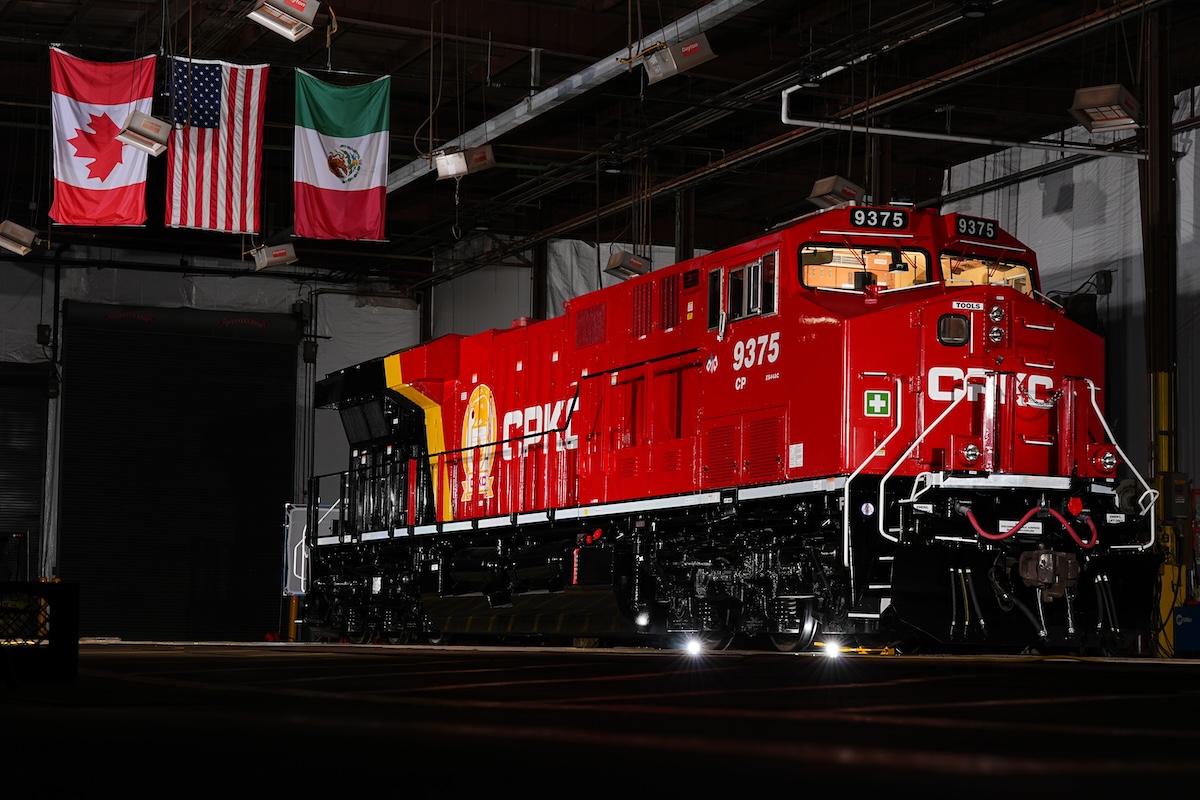lenaitch
Senior Member
I like the CP 'beaver shield'. With the shading it looked 3D

That's really dramatic for the revealing of a locomotive. I guess it'll make the foamers happy lol
CPKC debuts first locomotive in new livery - Trains
CALGARY, Alberta — Canadian Pacific Kansas City today unveiled the first locomotive to wear the railroad’s new paint scheme. CPKC ES44AC No. 9375 made its debut in the video posted on the railway’s social media channels. The locomotive will be on display in Union Station in Kansas City on...www.trains.com

Link to TSB Report
CP24 – Toronto Breaking News, Live Updates, Weather and Traffic Today
Get the latest breaking news headlines, weather reports, and traffic updates on Greater Toronto and the Hamilton Area.www.cp24.com
This incident proves that not enough has been learned to prevent another incident like what happened in Lac Megantic.
Seems like it's common practice to just wing it and hope it holds. Imagine the train rolled through a residential area for almost 4km's. That would be a different story all together. Seems like old habits are hard to break.
Yup and the same thing happened at lac Megantic. The brakes didn't hold.Link to TSB Report
My brief summary:
- The train crew secured the load of cars overnight in CP's 'G' Yard overnight
- The cars rolled away the next morning after a switching crew released the emergency brake system, and the applied hand brakes couldn't hold the load
- Employees tried to jump back on the cars to apply more handbrakes, but abandoned the effort when things started moving too fast
- The derailment occurred west of Neilson Road after hitting a derail
- Improperly accounting for slack between cars during brake tests was a major contributor to the incident
- 3 other similar incidents happened in the same yard, 2 of which were found to be the result of bad brake tests
Borrowing from the Swiss Cheese Model, parking on a mainline track (hence no derails or bumper posts to stop the train) was the one slice too many to be removed that led to the catastrophe in Lac-Mégantic…Yup and the same thing happened at lac Megantic. The brakes didn't hold.
Borrowing from the Swiss Cheese Model, parking on a mainline track (hence no derails or bumper posts to stop the train) was the one slice too many to be removed that led to the catastrophe in Lac-Mégantic…
Part of the rule is after applying the hand brakes, the engineer is supposed to try to move the train to ensure it does not move.The slices of supposdly solid cheese that railways insert in the deck in hopes of blocking holes are often inadequate, or incredibly wishful thinking. When the rule is five handbrakes (based no doubt on somebody's opinion that "five ought to be enough") but the empirical data determines that the number needed is ten.... one has to ask on what basis do these rules get written?
The slice that did cover the holes was the split rail derail device, but it is truly a last resort, since it works by derailing a few cars before the whole string of cars can run away and develop greater momentum. It's a calculated acceptance of lesser harm to avoid greater harm.
The thing to appreciate is - and this is why we find railways useful - is that railcars are far more friction-free than the average person realises. They roll practically of their own free will. And what may look flat to the uninformed observer isn't flat at all. One would think that given this fact, braking and securing technology and practices would have been pushed further.
- Paul
Correction; a crew member, not necessarily an engineer. Yard crews in the big freight yards don't normally have an engineer, they're typically manned by two conductors controlling the loco remotely using belt packs like thisPart of the rule is after applying the hand brakes, the engineer is supposed to try to move the train to ensure it does not move.
Regardless, the hand brakes must be tested prior to leaving the engine. Whether the engineer moves it or a conductor, the rule include the need to testing the brakes.Correction; a crew member, not necessarily an engineer. Yard crews in the big freight yards don't normally have an engineer, they're typically manned by two conductors controlling the loco remotely using belt packs like this
(The red flashing light on the underside of a loco indicates it's a remote)
Absolutely, but it certainly doesn't help that the employees working the large yards at CP and CN are usually the most junior. Often you'll have two conductors working together who've only been on the job for a few months and this after being rushed through training. When you reduce crew sizes and then remove the most seasoned veteran components of crews(engineers) in the name of cost-cutting, it greatly increasing the likelihood of mistakes.Regardless, the hand brakes must be tested prior to leaving the engine. Whether the engineer moves it or a conductor, the rule include the need to testing the brakes.
Absolutely, but it certainly doesn't help that the employees working the large yards at CP and CN are usually the most junior. Often you'll have two conductors working together who've only been on the job for a few months and this after being rushed through training. When you reduce crew sizes and then remove the most seasoned veteran components of crews(engineers) in the name of cost-cutting, it greatly increasing the likelihood of mistakes.




